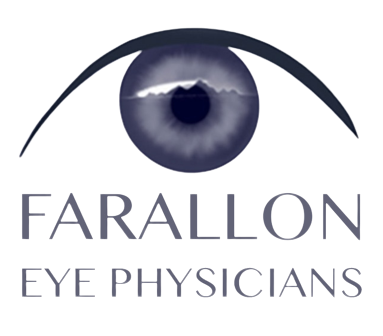Eye Ultrasound
Eye Ultrasound
Eye Ultrasound
Ultrasound, also referred to as echography, uses high frequency sound waves to produce images of the internal eye structures. It is a helpful diagnostic tool if cataracts or other conditions prevent a doctor from viewing inside of your eye with traditional methods. Ultrasound is helpful for diagnosing retinal detachment, vitreous bleeding, tumors, inflammation, lesions in the eye socket bone, or foreign bodies in the eye. A-scan ultrasound is used to take measurements for artificial lenses for cataract surgery. This quick and painless procedure can be performed in your doctor’s office.
Anatomy
Your eyes and brain work together with amazing efficiency. Light rays enter the front of your eye and are interpreted by your brain as images. Light rays first enter your eye through the cornea, the “window” of your eye. The cornea is a clear dome that helps your eyes focus.
The anterior chamber is located behind the cornea and in front of the iris. The anterior chamber is filled with a fluid that maintains eye pressure, nourishes the eye, and keeps it healthy. The iris is the colored part of your eye. The muscles in your iris work to make the pupil of your eye larger or smaller. The pupil is the black circle in the center of your iris. It changes size to allow more or less light to enter your eye.
After light comes through the pupil, it enters the lens. The lens is a clear curved disc. Muscles adjust the curve in the lens to focus clear images on the retina. The retina is located at the back of your eye.
Your inner eye or the space between the posterior chamber behind the lens and the retina is the vitreous body. It is filled with a clear gel substance that gives the eye its shape. Light rays pass through the gel on their way from the lens to the retina.
The retina is a thin tissue layer that contains millions of nerve cells. The nerve cells are sensitive to light. Cones and rods are specialized receptor cells. Cones are specialized for color vision and detailed vision, such as for reading or identifying distant objects. Cones work best with bright light. The greatest concentration of cones is found in the macula and fovea at the center of the retina. The macula is the center of visual attention. The fovea is the site of visual acuity or best visual sharpness. Rods are located throughout the rest of the retina.
Your eyes contain more rods than cones. Rods work best in low light. Rods perceive blacks, whites, and grays, but not colors. They detect general shapes. Rods are used for night vision and peripheral vision. High concentrations of rods at the outer portions of your retina act as motion detectors in your peripheral or side vision.
The receptor cells in the retina send nerve messages about what you see to the optic nerve. The optic nerves extend from the back of each eye and join together in the brain at the optic chiasm. From the optic chiasm, the nerve signals travel along two optic tracts and eventually to the occipital cortex.
Diagnosis
Uses
Ultrasound uses high frequency sound waves to produce images of the internal eye structure. It is a helpful tool if cataract or vitreous clouding prevents a doctor from viewing the structures inside of your eye with traditional methods. A-scan and B-scan are two types of ultrasound tests. A-scan ultrasonography is used to measure the length from the cornea to the retina. B-scan ultrasonography is used to provide cross-sectional two-dimensional images of the inner eye.
Ultrasound is helpful for diagnosing retinal detachment, vitreous bleeding, tumors, inflammation, lesions in the eye socket bone, or foreign bodies in the eye. A-scan measurements are a factor used for selecting an artificial lens implant for cataract surgery. A-scan ultrasonography is also used to identify types of tumors in the eye.
Preparation
You should arrange to have another person drive you home from your test. Following the procedure, you should not rub or touch your eyes for 30 minutes. There are no other special preparations for ultrasound examination.
Testing
Ultrasound is a quick and painless procedure. It is performed in your doctor’s office. For an A-Scan, your doctor will numb your eye with eye drops. A small transducer device is placed on your eye. The transducer transmits sound waves to a computer that produces images of the structures inside your eye. A B-scan is done through the closed eyelids and requires no preparation.
You will be asked to look straight ahead during the A-scan ultrasound. You will be instructed to look in various directions during the B-scan ultrasound. This allows your doctor to view your inner eye from different angles.
The anesthesia (numbing agent) in your eye should wear off about 15 minutes after your test. You should avoid rubbing or touching your eyes for 30 minutes following your test. This is necessary to avoid scratching your cornea.
This information is intended for educational and informational purposes only. It should not be used in place of an individual consultation or examination or replace the advice of your health care professional and should not be relied upon to determine diagnosis or course of treatment.
The iHealthSpot patient education library was written collaboratively by the iHealthSpot editorial team which includes Senior Medical Authors Dr. Mary Car-Blanchard, OTD/OTR/L and Valerie K. Clark, and the following editorial advisors: Steve Meadows, MD, Ernie F. Soto, DDS, Ronald J. Glatzer, MD, Jonathan Rosenberg, MD, Christopher M. Nolte, MD, David Applebaum, MD, Jonathan M. Tarrash, MD, and Paula Soto, RN/BSN. This content complies with the HONcode standard for trustworthy health information. The library commenced development on September 1, 2005 with the latest update/addition on April 13th, 2016. For information on iHealthSpot’s other services including medical website design, visit www.iHealthSpot.com.
To schedule an appointment for optical, ophthalmology or cosmetic services in Daly City, California, simply call the office of Susan Longar, MD.



